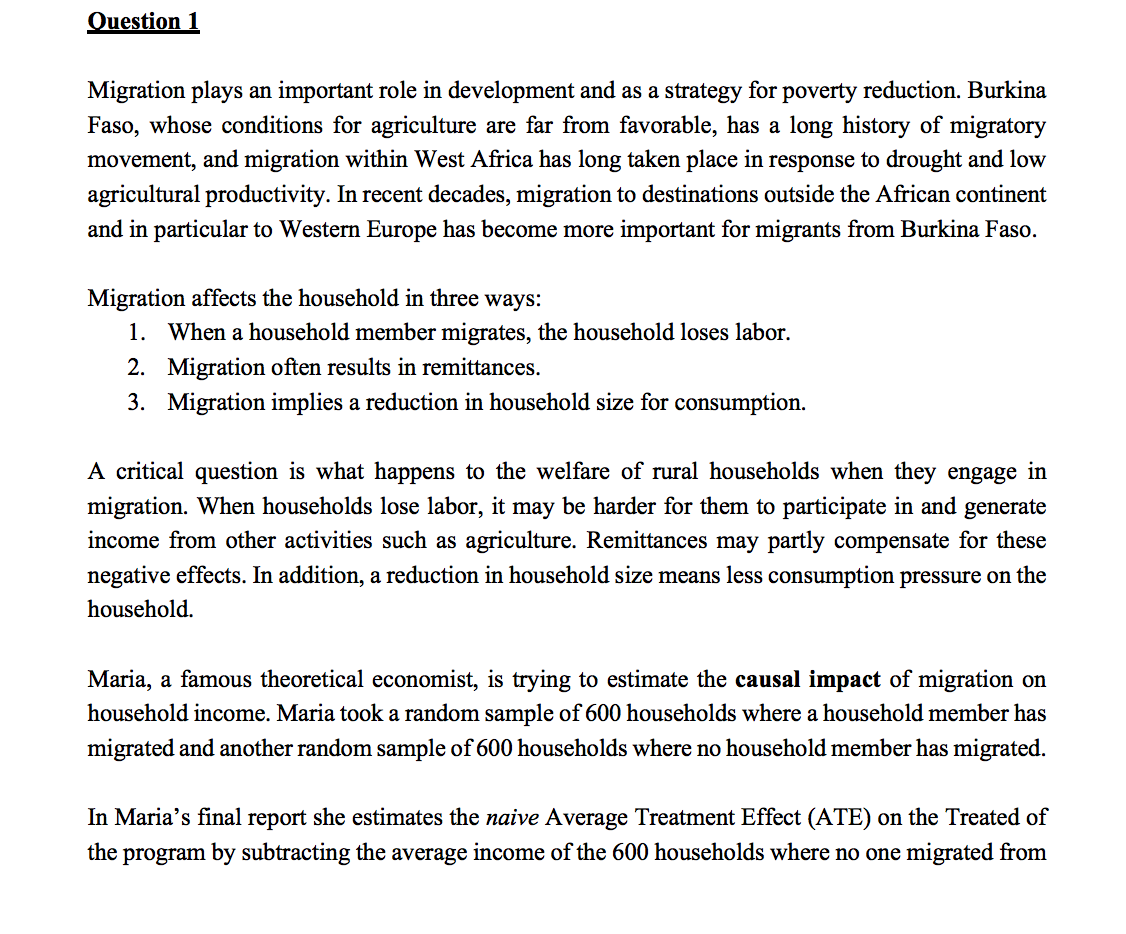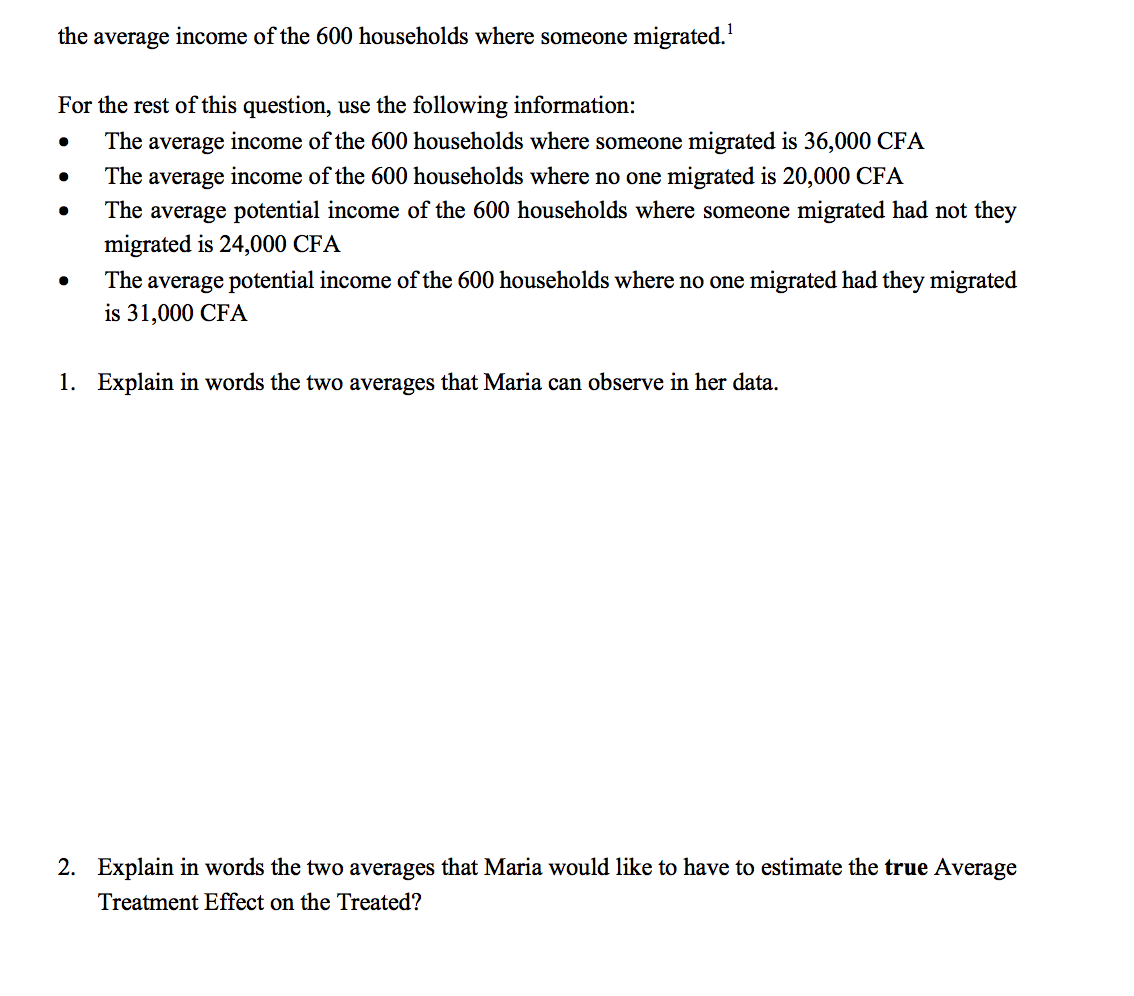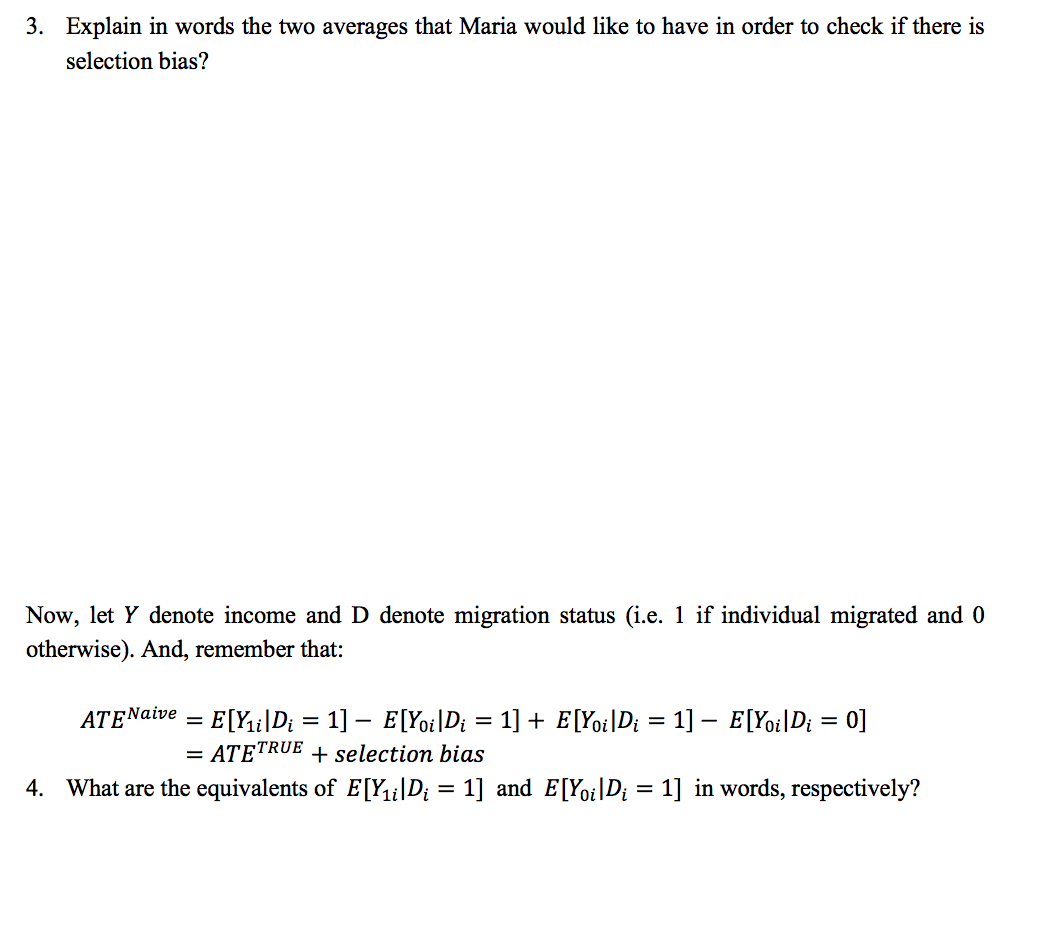Question 1 Migration plays an important role in development and as a strategy for poverty reduction. Burkina Faso, whose conditions for agriculture are far from favorable, has a long history of migratory movement, and migration within West Africa has long taken place in response to drought and low agricultural productivity. In recent decades, migration to destinations outside the African continent and in particular to Western Europe has become more important for migrants from Burkina Faso. Migration affects the household in three ways: 1. When a household member migrates, the household loses labor. 2. Migration oen results in remittances. 3. Migration implies a reduction in household size for consumption. A critical question is what happens to the welfare of rural households when they engage in migration. When households lose labor, it may be harder for them to participate in and generate income from other activities such as agriculture. Remittances may partly compensate for these negative effects. In addition, a reduction in household size means less consumption pressure on the household Maria, a famous theoretical economist, is ying to estimate the causal impact of migration on household income. Maria took a random sample of 600 households where a household member has migrated and another random sample of 600 households where no household member has migrated. In Maria's nal report she estimates the naive Average Treatment Effect (ATE) on the Treated of the program by subtracting the average income of the 600 households where no one migrated from the average income of the 600 households where someone migratedl For the rest of this question, use the following information: o The average income of the 600 households where someone migrated is 36,000 CFA o The average income of the 600 households where no one migrated is 20,000 CFA o The average potential income of the 600 households where someone migrated had not they migrated is 24,000 CFA o The average potential income of the 600 households where no one migrated had they migrated is 31,000 CFA 1. Explain in words the two averages that Maria can observe in her data. 2. Explain in words the two averages that Maria would like to have to estimate the true Average Treatment Effect on the Treated? 3. Explain in words the two averages that Maria would like to have in order to check if there is selection bias? Now, let Y denote income and D denote migration status (i.e. 1 if individual migrated and 0 otherwise). And, remember that: ATENaive = E[Yi|Di = 1] - E[You|Di = 1] + E[You|Di = 1] - E[Yoi|Di = 0] = ATETRUE + selection bias 4. What are the equivalents of E[YjilDi = 1] and E[Yo;|Di = 1] in words, respectively?5. What is Maria's estimate of the naive Average Treatment Effect? Show your steps. 6. What is the true causal impact of migrating on the income of households where someone migrated? Show your steps. 7. How large is the selection bias? Show your steps. 8. Are the 600 households where no one migrated a good counterfactual for the 600 households where someone migrated? Why











